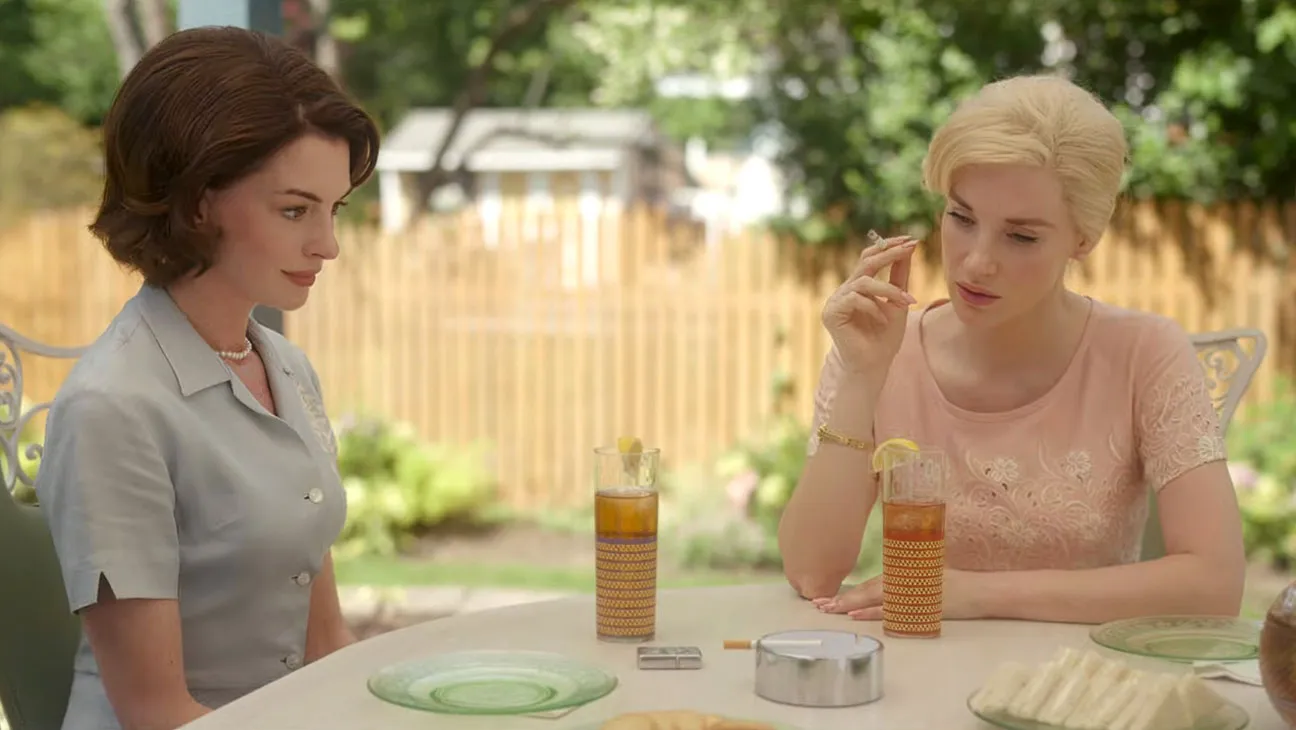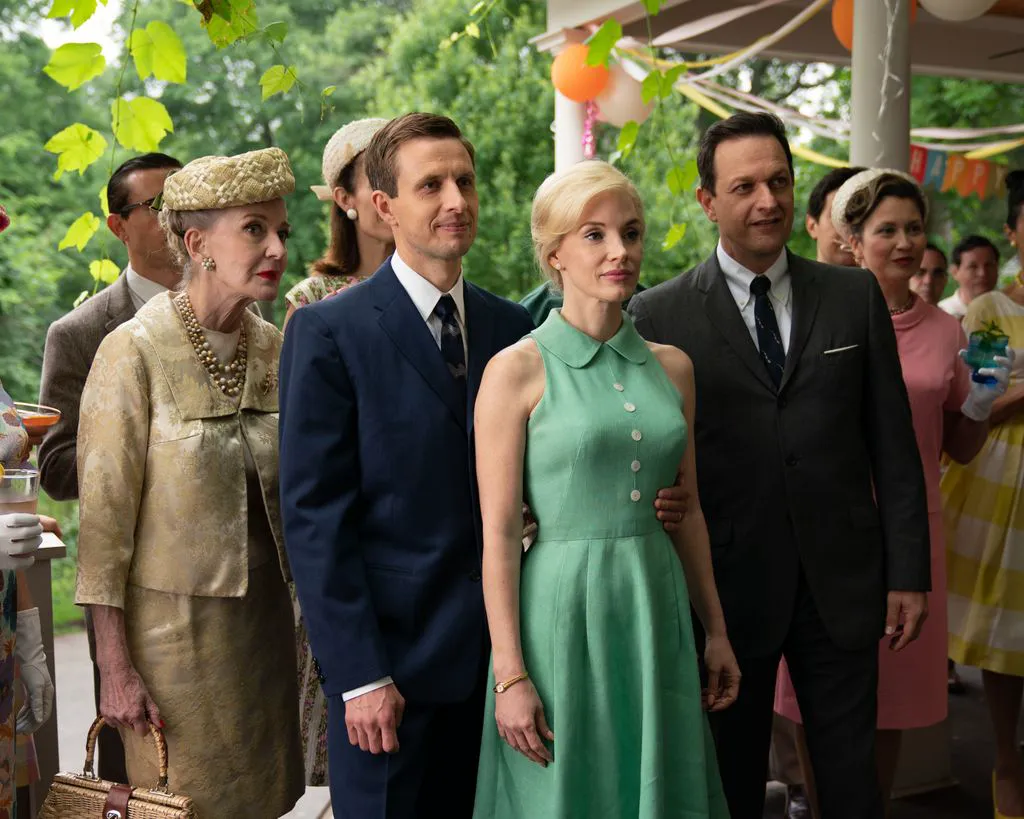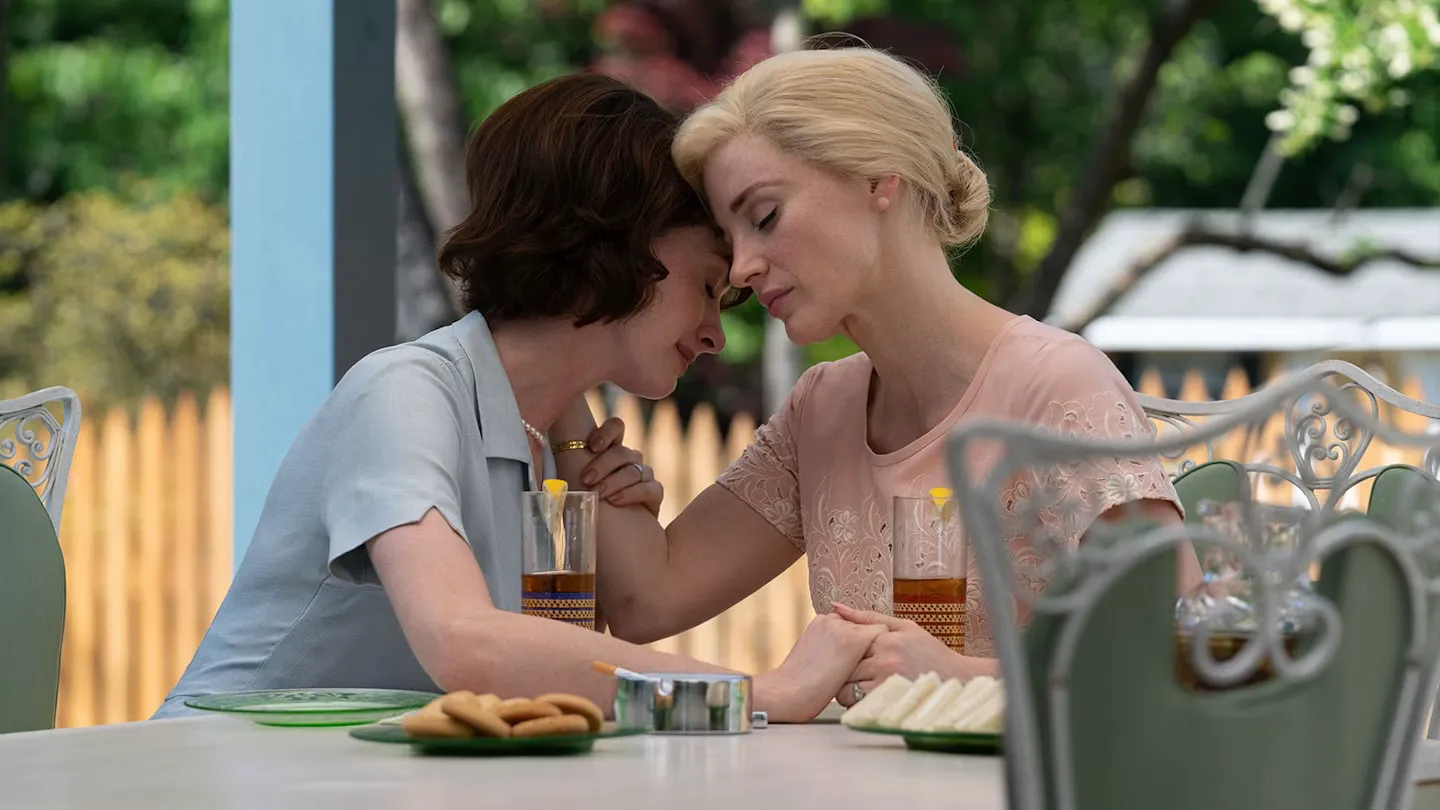Maternal Instinct: A Tale of Suspicion and Loss in the Suburbs
Set in the 1960s in an unnamed American town, “Maternal Instinct” delves into the lives of two exemplary housewives, Alice (Jessica Chastain) and Celine (Anne Hathaway), whose close friendship is shattered by tragedy. They are both raising young sons, Theo and Maxime, who are close in age. Their idyllic world is turned upside down when Maxime tragically dies in an accident, witnessed by Alice, who is unable to save him.
The devastating loss of Maxime drives a wedge between the two women, poisoning their bond with resentment, guilt, and a creeping paranoia. Alice becomes convinced that Celine harbors a desire to take her child, while Celine appears to be consumed by grief.

Anne Hathaway as Celine in “Maternal Instinct”
A Director’s Debut and a Remake
“Maternal Instinct” marks the directorial debut of Benoît Delhomme, a French cinematographer known for his work on films such as “At Eternity’s Gate,” “A Most Wanted Man,” “Lawless,” and “The Boy in the Striped Pajamas.” The film is based on the novel of the same name by Barbara Abel, published in 2012. The story was previously adapted into a successful film by Belgian filmmaker Olivier Masset-Depasse six years prior. Masset-Depasse’s version garnered numerous accolades, including ten nominations at the Magritte Awards and a screening at the Toronto International Film Festival.

Jessica Chastain as Alice in “Maternal Instinct”
Missed Opportunities?
Despite the star power of Jessica Chastain and Anne Hathaway, Delhomme’s Hollywood remake has not achieved the same level of recognition. Delhomme had previously worked with both actresses, Chastain on Al Pacino’s “Wilde Salomé” and Hathaway on the adaptation of David Nicholls’ “One Day.” As a remake, “Maternal Instinct” largely mirrors Masset-Depasse’s style, almost to the point of being a shot-for-shot recreation.
While the film’s 1960s setting suggests a Hitchcockian suspense, both Masset-Depasse and Delhomme subvert these expectations. The historical setting is primarily conveyed through set design (classic American homes and vintage cars) and, less convincingly, through the hairstyles and costumes of the main characters. Chastain, in particular, is styled in a way that resembles a pale imitation of Grace Kelly.
Delhomme, with his background in cinematography, had the potential to surpass the original’s visually restrained style. However, he instead focuses on contrasting the two main characters, emphasizing their differences through hair color and temperament. Celine’s self-assurance is juxtaposed with Alice’s savior complex and overprotective nature, who, despite her feminine image, seems to ignore her intuition.

Jessica Chastain as Alice in “Maternal Instinct”
Uneven Performances
The anticipated on-screen clash between the two Oscar-winning actresses never fully materializes. The narrative primarily centers on Chastain’s character’s growing paranoia, while Hathaway’s character remains in the shadows, building towards a plot twist. Even in the recent film “Eileen,” Hathaway, whose look is well-suited to the 1960s aesthetic, was more compelling. In “Maternal Instinct,” the distribution of screen time and focus is uneven, with Alice’s anxieties being more readily apparent, while Celine’s motivations remain largely unexplored.
A Moral Lesson
The core message of Barbara Abel’s novel remains relevant: trust your instincts. Self-reliance is a fundamental value, and its absence can lead to psychological and even physical harm. Despite its artistic shortcomings, Benoît Delhomme’s film effectively highlights this theme, serving as a cautionary tale for those who compromise their values.